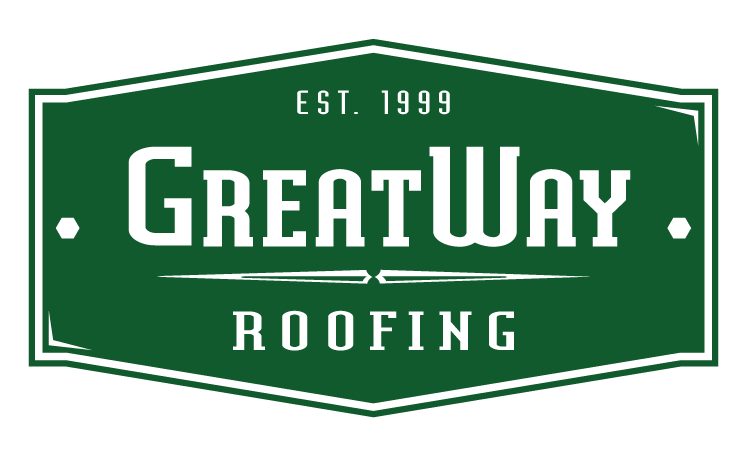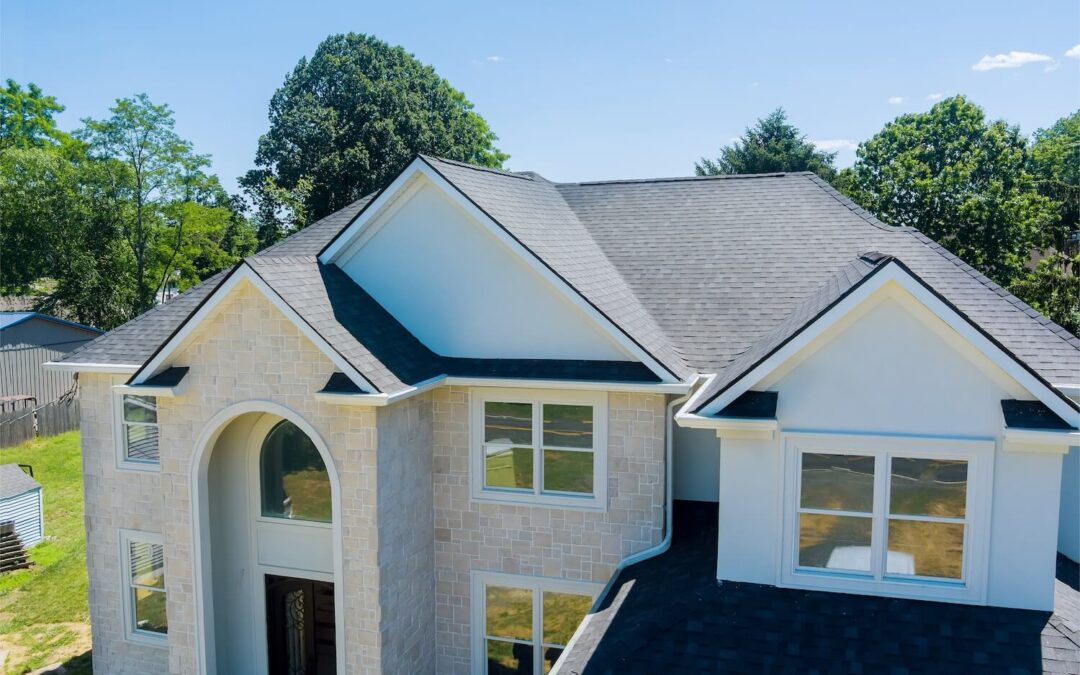Re-roofing is a significant undertaking for any homeowner, often seen as a necessary investment rather than a mere home improvement project. The decision to replace a roof involves evaluating various factors, including roofing materials, labor costs, potential energy savings, and the long-term benefits of enhanced home value and safety.
This article will delve into the costs and benefits of re-roofing your home to help you make an informed decision.
Understanding the Need for Home Re-Roofing
Before diving into the costs and benefits, it’s essential to understand why re-roofing may be necessary. Several indicators signal that it’s time to consider this significant upgrade:
- Age of the Roof: Most roofing materials have a specific lifespan. For instance, asphalt shingles last about 15-30 years, while tile roofs can last over 50 years if correctly installed and maintained. If your roof is nearing the end of its lifespan, it may be time to re-roof.
- Visible Damage: Signs of wear, such as missing shingles, cracks, slipped tiles, or leaks, indicate that the roof is no longer performing effectively. Even minor issues can lead to significant damage if not addressed promptly.
- Increased Energy Bills: If you notice a spike in your heating or cooling bills, your attic or roof’s insulation and ventilation might be compromised. A new roof can help improve energy efficiency.
- Mold or Mildew: Mold or mildew in your attic or on the ceiling can indicate roof leaks or inadequate ventilation, necessitating a re-roofing project.
- Desire to Improve Aesthetics: Sometimes, homeowners choose to re-roof simply to enhance their home’s appearance or to update its architectural style. A new roof can also improve the curb appeal, making the house more inviting.
Costs of Home Re-Roofing
Understanding the costs associated with re-roofing is critical for budgeting and financial planning. While the total expenses can vary widely, here’s a breakdown of the main cost factors:
1. Materials
The choice of roofing material significantly impacts the overall roof cost. Here are some common roofing materials and their average costs per square (100 square feet):
- Asphalt Shingles: $90 – $100
- Metal Roofing: $150 – $600
- Tile Roofing: $600 – $800
While asphalt shingles are the most economical option, metal and tile roofs offer durability and longevity, which may justify the higher initial costs over time.
2. Labor
Labor costs typically range from $100 to $150 per hour, depending on the region and the job’s complexity. On average, homeowners can expect to pay between $1.50 and $3.00 per square foot for labor. The total labor costs will depend on the roof’s size and the installation’s difficulty.
3. Removal of Old Roofing
If you are replacing an existing roof, the old roofing material may need to be removed, depending on the local building and city codes, which can add to the cost. Roof tear-off costs can range from $1.00 to $3.00 per square foot, depending on the material and local disposal fees.
4. Permits and Inspections
Depending on local building codes, you may need permits for re-roofing. The cost of permits can range from $100 to $500. Additionally, inspections may be required, which will require more time.
Total Estimated Costs
Considering all these factors, the total cost for re-roofing a standard 2,000-square-foot home can range from $8,000 to $30,000, depending on the materials and complexity of the installation. For example, using high-end materials like slate can push costs toward the higher end of this range.
Financing Options for Re-Roofing
Given the substantial costs associated with re-roofing, many homeowners seek financing options to manage their budgets. Here are some common financing strategies:
- Home Equity Loans: Homeowners can borrow against the equity they’ve built in their homes. These loans usually offer lower interest rates than personal loans.
- Personal Loans: For homeowners without sufficient equity, personal loans can cover re-roofing costs. However, these loans may have higher interest rates.
- Credit Cards: Some homeowners may use credit cards for immediate costs, although high interest rates can make this option expensive if the balance isn’t paid off quickly.
- Insurance Claims: If your roof has been damaged by a storm or other covered event, homeowners may file an insurance claim to help cover costs.
It’s important to evaluate the pros and cons of each financing option and choose the one that aligns best with your financial situation.
Benefits of Home Re-Roofing Design
While the costs of re-roofing may seem substantial, the long-term benefits can outweigh these initial expenses. Here are some of the key advantages of re-roofing your home:
1. Increased Home Value
A new roof can significantly enhance your home’s resale value. According to the National Association of Realtors, homeowners can recoup about 70% to 80% of their roofing costs when selling the house. Potential buyers often view a new roof as a major selling point, as it reduces their maintenance concerns for years to come.
2. Improved Energy Efficiency
Older roofs can lead to heat loss and increased energy bills. Homeowners can benefit from improved insulation and ventilation by re-roofing with modern materials designed for energy efficiency. This can lead to substantial savings on heating and cooling costs, potentially offsetting some initial re-roofing expenses.
Additionally, energy-efficient roofs may qualify for tax credits or rebates, further enhancing their financial benefits.
3. Enhanced Safety and Comfort
Re-roofing not only improves aesthetics but also ensures the safety of your home. A new roof prevents leaks, leading to water damage, mold growth, and structural problems. Ensuring your roof is in good condition also contributes to your overall comfort by maintaining consistent indoor temperatures.
4. Warranty Coverage
Many roofing materials come with warranties that can last 20 years or more. These warranties cover defects and can provide homeowners with peace of mind. Choosing a reputable roofing contractor ensures that the installation is done correctly, which can also safeguard your investment.
5. Modern Design Options
Re-roofing allows homeowners to choose from a variety of modern roofing materials and styles that can enhance their home’s overall curb appeal. Whether you prefer traditional asphalt shingles or a more contemporary metal roof, the aesthetic options are nearly endless.
The opportunity to select colors and designs that align with your home’s style can significantly enhance your property’s appearance.
6. Reduction of Future Repair Costs
By investing in a new roof, homeowners can avoid frequent repairs associated with older roofing systems. A new roof significantly decreases the likelihood of leaks, mold, and damage, leading to lower maintenance costs over time.
This proactive approach can save money and stress, allowing homeowners to focus on enjoying their homes rather than worrying about potential issues.
7. Environmental Benefits
Re-roofing can also contribute to environmental sustainability. Many modern roofing materials are designed to be energy-efficient, reflecting sunlight and reducing heat absorption. This can lead to lower energy consumption, which is beneficial for both the environment and your utility bills.
Choosing the Right Roofing Project Contractor
Selecting the right roofing contractor is one of the most critical decisions you will make during the re-roofing process. The installation’s quality directly impacts your new roof’s longevity and performance. Here are some detailed tips to guide you in choosing a reliable contractor:
1. Research and Referrals
Start your search by gathering recommendations from friends, family, neighbors, or colleagues who have recently completed roofing projects. Personal experiences can provide valuable insights into the contractor’s reliability and quality of work. You can also check online resources, such as:
- Review Websites: Platforms like Yelp, Google Reviews, and Angie’s List allow homeowners to share their experiences with contractors. Pay attention to both positive and negative reviews to gauge the contractor’s reputation.
- Social Media: Many contractors maintain social media profiles where they showcase their work. Engaging with these platforms can also provide insight into their customer interactions.
2. Get Multiple Quotes
Obtaining multiple quotes is essential to understanding the average costs and services provided by different contractors. When soliciting quotes:
- Be Specific: Clearly outline your project’s scope, including the materials you wish to use and any additional features. This ensures that all contractors provide comparable estimates.
- Compare Apples to Apples: When reviewing quotes, ensure they include the same services, materials, and warranties to make a fair comparison. Look for detailed breakdowns of labor and material costs.
3. Check Licenses and Insurance
Ensure the contractor is properly licensed and insured. A licensed contractor meets local building codes and regulations, which protects you from potential liabilities. Here’s what to verify:
- License: Check with your state’s licensing board to confirm that the contractor holds the necessary licenses to operate in your area.
- Insurance: Request proof of general liability insurance and workers’ compensation insurance. This coverage protects you from being held responsible for accidents that may occur on your property during the project.
4. Review Previous Work
A reputable contractor should be able to provide examples of their previous projects. Ask for:
- Portfolio: Many contractors keep a portfolio of completed projects. This can give you a visual sense of their craftsmanship and style.
- References: Request a list of references from past clients. Reach out to these individuals to ask about their experiences, the quality of the work, and the contractor’s reliability.
5. Ask About Warranties
Inquire about the warranties offered by the roofing contractor and the roofing materials. A strong warranty can provide peace of mind regarding the quality of the work. Consider the following:
- Material Warranty: Most roofing manufacturers provide warranties on their materials, which can range from 20 years to a lifetime. Understand what is covered and any exclusions.
- Workmanship Warranty: A reputable contractor should offer a workmanship warranty that covers any installation-related issues. Typically, this warranty lasts from 1 to 10 years.
- Transferability: If you plan to sell your home, ask whether the warranty is transferable to the new owner, which can enhance your home’s resale value.
6. Communication and Professionalism
Effective communication is vital for a successful roofing project. Evaluate the contractor’s professionalism in the following ways:
- Responsiveness: Pay attention to how quickly the contractor responds to your inquiries. A reliable contractor should be prompt in communication and willing to answer any questions you have.
- Transparency: A good contractor will provide clear and honest information about the project, including timelines, costs, and potential challenges. They should also be upfront about their processes and procedures.
- Attitude: Consider the contractor’s demeanor during your interactions. Professionalism, courtesy, and respect are essential traits that reflect their commitment to customer service.
7. Local Expertise
Choosing a local contractor can offer several advantages:
- Familiarity with Local Codes: A contractor who operates in your area will be familiar with local building codes, regulations, and permit requirements, ensuring compliance throughout the project.
- Understanding of Regional Weather: Local contractors are experienced with your region’s specific weather challenges, allowing them to recommend appropriate materials and installation techniques.
- Accountability: Local contractors often rely on their reputation in the community. To maintain their standing, they are more likely to prioritize quality workmanship and customer satisfaction.
- Trust Your Instincts
8. Trust Your Instincts
Lastly, trust your instincts when choosing a contractor. Continuing your search is perfectly acceptable if something feels off or you have doubts about a contractor’s credibility. Your comfort level and confidence in the contractor are essential for a successful roofing project.
Roofing Project Conclusion
Re-roofing your home is a significant investment, but the benefits often outweigh the costs. By understanding the financial implications, exploring various materials, and selecting the right contractor, you can make an informed decision that enhances your home’s value, safety, and energy efficiency. With careful planning and consideration, a new roof can provide peace of mind for years, ensuring that your home remains a safe and comfortable haven for you and your family.

